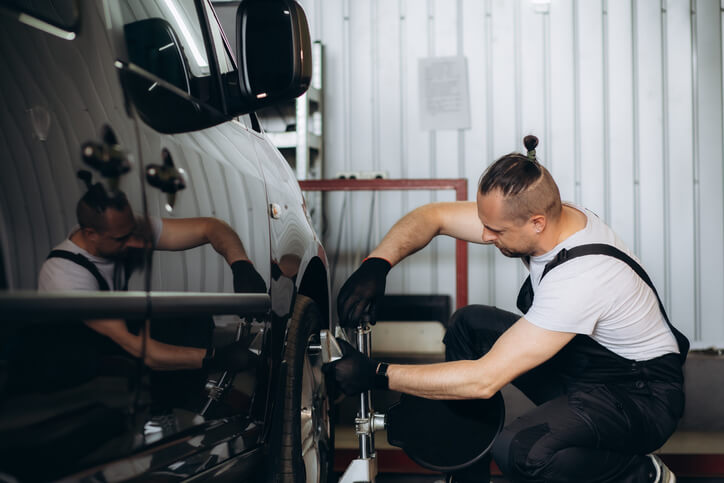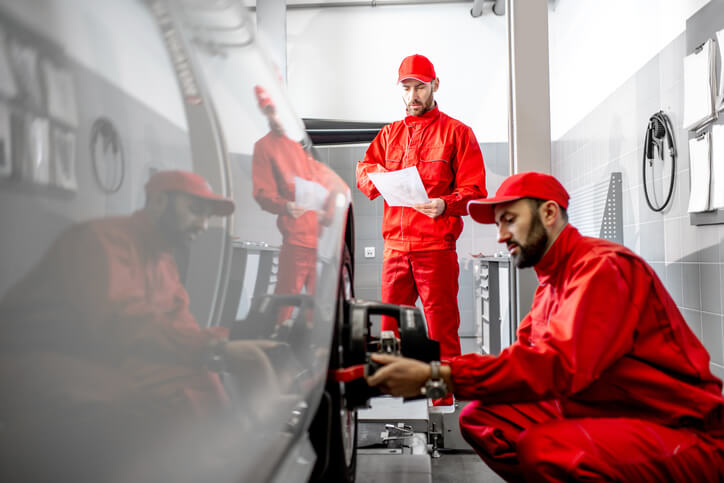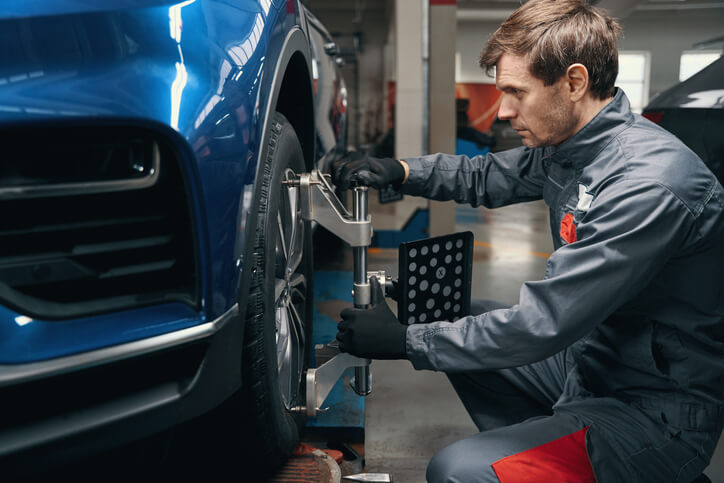An Introduction to Wheel Alignment Theory for Those in Automotive Technology Training
In today’s vehicles, steering, and suspension systems demonstrate how solid geometry concepts find practical application. Wheel alignment combines various steering and suspension geometry aspects to deliver safe, smooth handling, a comfortable ride, and extended tire durability.
If you’re currently undergoing automotive technology training, it’s crucial to grasp the concept of wheel alignment and its role in supporting the smooth operation of vehicles. Proper wheel alignment is crucial for vehicle safety, handling, and tire longevity. In this blog post, we’ll provide an introductory overview of wheel alignment theory to help those pursuing a career in automotive technology gain a solid foundation.
Automotive Technology Training Explains Wheel Alignment
Wheel alignment, often called “tracking,” involves precisely positioning a vehicle’s wheels relative to each other and the vehicle’s frame. Proper alignment ensures that the wheels are parallel to each other and perpendicular to the ground when viewed from the front and side of the vehicle.
Regular alignment checks and adjustments are essential for maintaining vehicle safety and performance. As is often advised in automotive school, it’s important to check alignment every 6,000 to 10,000 miles or as needed, especially after hitting potholes or curbs. You’ll need specialized equipment, such as alignment racks, lasers, and computer software, to perform wheel alignment. These tools help automotive technicians precisely adjust the vehicle’s alignment settings to meet manufacturer specifications.
Different Types of Wheel Alignment
Caster, camber, and toe are some of the most common terms you’ll hear about in any discussion about wheel alignment. Toe alignment refers to the inward or outward tilt of the wheels when viewed from the top. If the front edges of the wheels point towards each other, it’s called toe-in, while pointing away from each other is toe-out. Correct toe alignment ensures even tire wear and stable handling.
Camber is the vertical tilt of the wheels when viewed from the front. Positive camber is when the tops of the wheels lean outward, while negative camber is when they lean inward. Proper camber alignment is vital for even tire wear and handling stability.

Caster alignment involves the angle of the steering axis concerning the vertical axis when viewed from the side. This angle affects steering stability and self-centering. Positive caster tilts the steering axis backward, while negative caster tilts it forward.
Effects of Incorrect Wheel Alignment
Incorrect wheel alignment can lead to various problems, including:
- Uneven Tire Wear: Misaligned wheels can cause tires to wear unevenly, reducing lifespan and increasing operating costs.
- Reduced Fuel Efficiency: Poor alignment can lead to increased rolling resistance, resulting in reduced fuel efficiency.
- Poor Handling: Improper alignment can lead to stable and predictable handling, making the vehicle difficult to control.
- Safety Risks: A car with severe alignment issues can be challenging to drive safely, especially in emergencies.

Automotive Technology Training Identifies the Signs of Misalignment
As someone undergoing automotive technology training, you need to be able to identify the signs of misalignment. Some common indicators include:
- Uneven Tire Wear: Inspect the tires for uneven wear patterns, such as one side wearing faster than the other.
- Vehicle Pulling: If the vehicle drifts to one side when driving on a straight road, it may have alignment problems.
- Steering Wheel Off-Center: When the vehicle is moving straight, a crooked steering wheel suggests an alignment issue.
Do you want to explore our range of auto careers?
Contact ATC Cambridge for more information.


